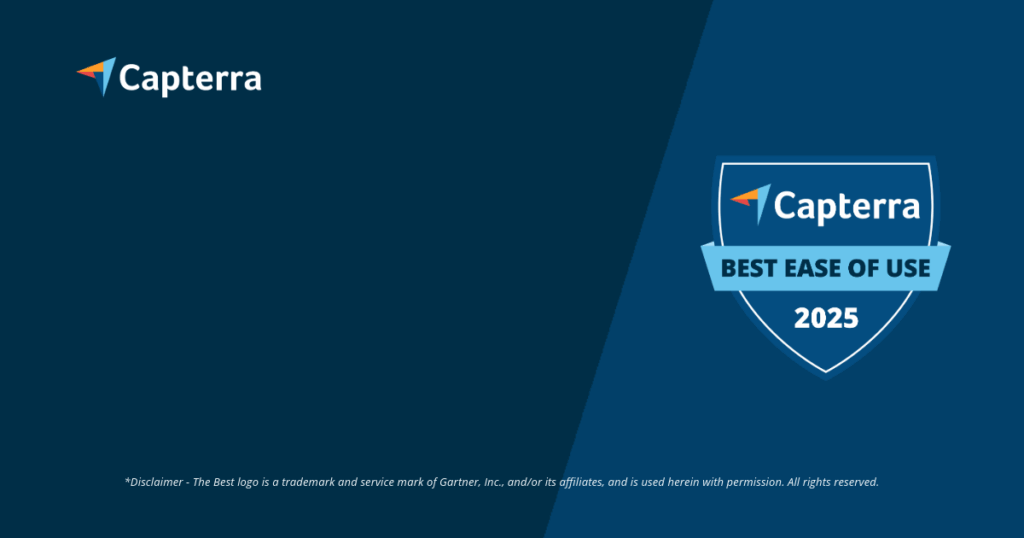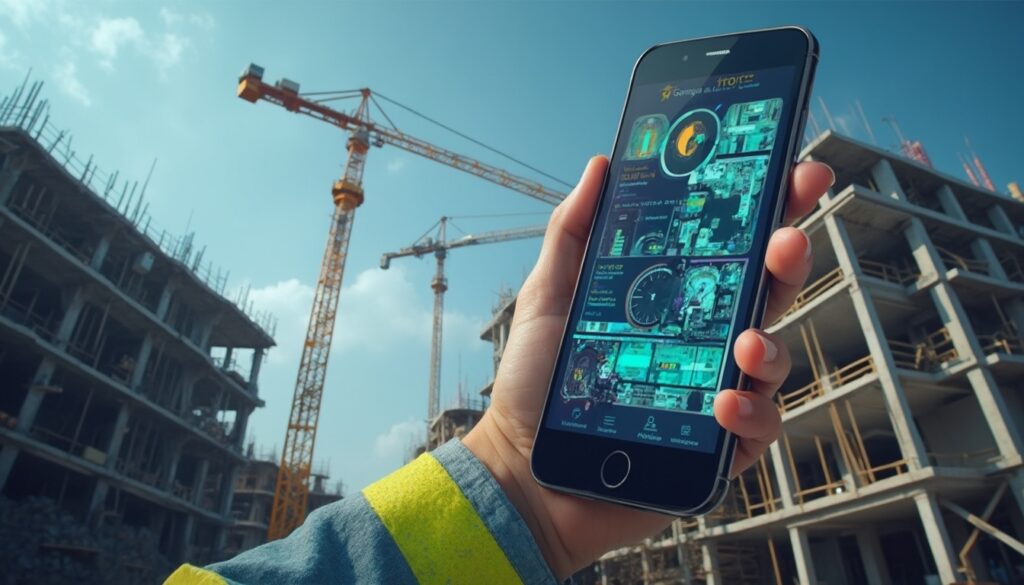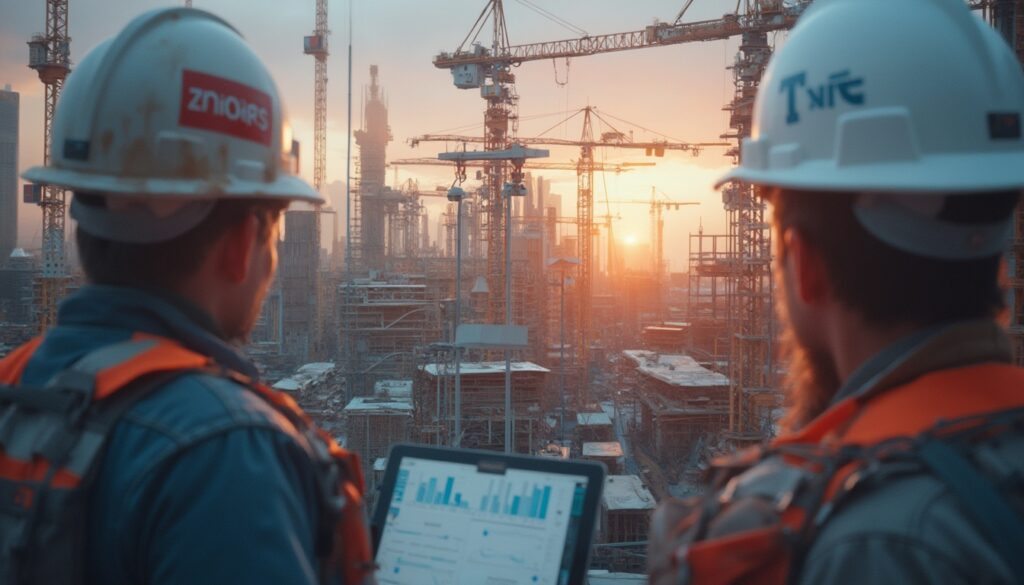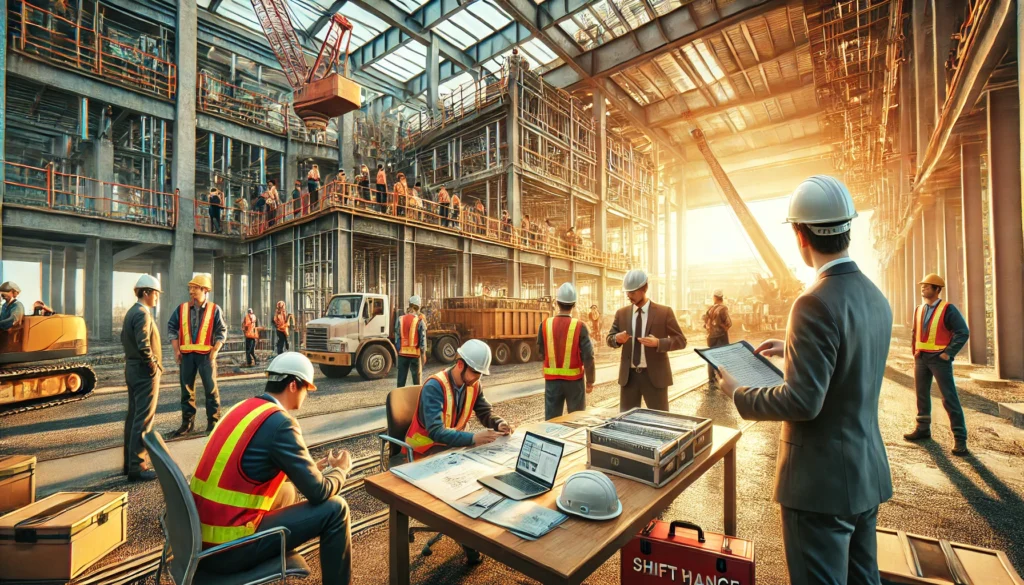Why over 60% of construction software implementations fail to meet expectations
Many software solutions for construction fail in the harsh reality of the job site. A main reason is insufficient App architecture, which prioritizes complexity over user-friendliness. This leads to employees not adopting the tools, causing the investment of up to 50,000 Euros per year for licenses to go to waste. The consequences are incomplete data, fragmented documentation, and an efficiency that falls far behind potential. Good construction software must be designed for acceptance from the start. Without a solid and well-thought-out architecture, even the best features remain unused.
The 4 pillars of a future-proof app architecture in construction
A powerful app architecture for the construction industry is based on four central principles that determine long-term success. These elements ensure that an application can meet the dynamic requirements of construction projects. Here are the four pillars:
- User acceptance: The application must be so simple that it can be used by 100% of employees without training.
- Scalability: The architecture must grow with your company and be able to handle 5 or 500 projects simultaneously without loss of performance.
- Security: GDPR compliance and data storage in Germany are non-negotiable and must be integrated from the ground up.
- Interoperability: The ability to communicate via APIs with other construction planning software prevents silo solutions and data silos.
These pillars provide the framework for a digital solution that truly works in practice.
Microservices increase the flexibility of construction apps by up to 50%
Choosing the right architecture type is a strategic decision. While traditional monoliths are built as one large, rigid block, a microservice architecture breaks the application down into small, independent services. This approach greatly increases flexibility, as individual functions can be updated without taking the entire application offline. For the construction industry, this means: A function like the project management software for construction can be enhanced while time tracking continues uninterrupted. This modular structure reduces downtime risk by over 70% and allows for faster adaptation to new market demands. This way, your software stays up-to-date without disrupting operations.
Increase user acceptance by 90% through an intuitive app architecture
The best technology is useless if no one uses it. A modern App architecture therefore places people at its center. Instead of forcing employees to learn another new app, the software should integrate into their existing workflows. Valoon follows exactly this approach by utilizing an app architecture that operates via WhatsApp – a tool already used by over 95% of construction professionals. This trick completely eliminates training effort and ensures immediate acceptance throughout the team. The result is seamless and legally compliant documentation from day one, as the barrier to usage is practically zero.
GDPR compliance from the start: Security as a cornerstone of architecture
Data protection is not a feature, but must be an integral part of the app architecture. Violations of GDPR can lead to fines of up to 20 million Euros. A secure architecture ensures that all data, from the inventory architecture to the daily construction report, are encrypted and protected. Key features include:
- Server location in Germany: Guarantees that your data does not leave the country and is subject to strict German data protection laws.
- End-to-end encryption: Protects communication from unauthorized access, even when it runs over public networks.
- Role-based permission management: Ensures that each employee only sees the information relevant to their tasks, increasing data security by 80%.
- Regular security audits: External experts review the systems to proactively identify and close vulnerabilities.
A fundamentally secure architecture is the best insurance against data leaks and cyber attacks.
How Valoon rethinks app architecture: No download, no training
Valoon breaks with the conventions of traditional construction software through a revolutionary App architecture. Instead of developing yet another app that needs to be installed and learned, Valoon seamlessly integrates into WhatsApp. For the employees on the job site, nothing changes: They communicate as usual via text and voice messages. In the background, the Valoon platform automatically structures, translates, and archives all information in a legally compliant manner. This construction planning app-architecture lowers the entry barrier to zero and guarantees 100% usage. The automatic generation of daily construction reports saves project managers up to 5 hours per week. Thus, digitalization transforms from a burden into a real, uncomplicated relief for the entire team.
Conclusion: A better app architecture is the direct path to more efficiency
Focusing on a well-thought-out App architecture is not a technical end in itself, but a hard-nosed business decision. It determines the acceptance, security, and scalability of your digital processes. An architecture that emphasizes simplicity and integration into existing tools like WhatsApp solves the biggest problems in job site digitalization: lack of usage and complex operation. This lays the foundation for seamless documentation, saves valuable time every day, and demonstrably makes your construction projects more efficient and legally secure. Book your free demo now and experience how Valoon’s unique architecture optimizes your construction processes.
More Links
Fraunhofer IESE provides a blog post about a study on digitalization in the construction industry.
Das Federal Statistical Office (Destatis) publishes an article about the digitalization potential in construction activity statistics.
Der Central Association of German Construction Trades (ZDB) provides a position paper on the topic of digitalization.
PwC publishes a press release on a study about the construction industry in 2023, highlighting the state of digitalization and sustainability.
Das Federal Ministry for Digital and Transport (BMDV) provides information on the digitalization index.
handwerkdigital.de provides information on the digitalization barometer for crafts.
FAQ
Is a special app installation necessary for my employees on the job site?
No, that is the decisive advantage of the Valoon architecture. Your employees on the job site continue to use WhatsApp as usual. No download, no installation, and no training for a new app is required.
How is data security ensured when using WhatsApp?
Valoon uses the official WhatsApp Business API and operates as a standalone, secure system in the background. All data is encrypted, stored in GDPR-compliant manner on ISO 27001-certified servers in Germany, and archived legally, regardless of users’ private chats.
Can the architecture grow with our company?
Yes, the Valoon platform is designed for scalability. Our service-oriented architecture allows for the easy addition of new projects, users, and even future features without compromising the performance or stability of the system.
What kind of information can be documented on the platform?
You can document all construction-related information: photos and videos for construction progress, voice messages for quick instructions, text messages for agreements, locations for precise positioning, and documents. Everything is automatically assigned to the correct project and logged in the daily construction report.
Does it work with international teams and different languages?
Yes, our architecture includes an integrated live translation feature. An employee can send a message in their native language as text or voice input, and the recipient receives it in their preferred language. This overcomes language barriers and reduces misunderstandings by over 90%.
How complicated is the implementation in our company?
Implementation is extremely straightforward and typically takes less than a day. Since employees on the job site do not need new software, the setup focuses on configuring the projects and access for users in the office (e.g., construction managers).








